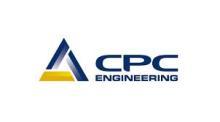

The COVID-19 pandemic has unequivocally affected all aspects of our life in cities as we know it. How we move about our cities – on our transport system – has seen considerable change.
In Perth, as in other cities across Australia, we have seen the most significant travel demand shift in our lifetimes. There has been a shift toward reduced travel - across all forms - as people are working from home, minimising commuting and changing behavioural patterns with work, learning and social activity.
But this won’t last, and as we recover, as advisors and designers in the built environment, we see opportunity for us all to ‘bounce forward,’ not just bounce back. To deliver new and improved outcomes and mitigate those things that don’t work as well as they could.
Our research and project work thus far indicates that the transport system will have to be more dynamic and responsive than it has traditionally been. Not only in design and operation, but also in considering more integrated project development processes linking conceptualisation to delivery and operation.
Arup has applied ‘whole of life cycle’ and integrated thinking to a number of transport related projects in Perth, including the Morley to Ellenbrook line, the Great Northern Highway Upgrade - Muchea to Wubin, Perth Stadium and Terminal 1 at Perth Airport. It means we can bring more holistic insight to the advice we provide, and better ensure we bring improved social value and environmental impact.
We are currently advising clients across a variety of post COVID-19 projects. These involve understanding the long-term impacts of COVID-19 restrictions on public transport patronage, designing people movement through rail cars considering physical distancing requirements, long-term city-wide scenario demand forecasting, impacts of COVID-19 requirements on rail business cases, and designing ‘tactical urbanism’ responses to changing demand on the transport system.
It’s clear that the ‘seed’ of flexibility of work, shopping and education has been sown in our minds due to COVID-19. This is reflected in more variable travel demand across our cities requiring our transport networks be dynamic, resilient and responsive.
Which cities will thrive? The cities that review and adapt their transport system during the time of more space and capacity in the wider transport system, that embrace the opportunity to reset the system, that celebrate the digital age and flexible travel-patterns to provide improved wellbeing and liveability in the longer term.
These cities will more likely successfully combine productivity with work-life balance in a way that we have not seen before – only aspired to.
We, at Arup, look forward to the journey ahead.
Read the full report ‘How will our cities move?’ which brings together the thoughts of Arup colleagues across Australasia. We look at all modes of transport, from car to bus, to rail to freight, to walking and cycling and how we think we can ‘bounce the transport system forward.’















